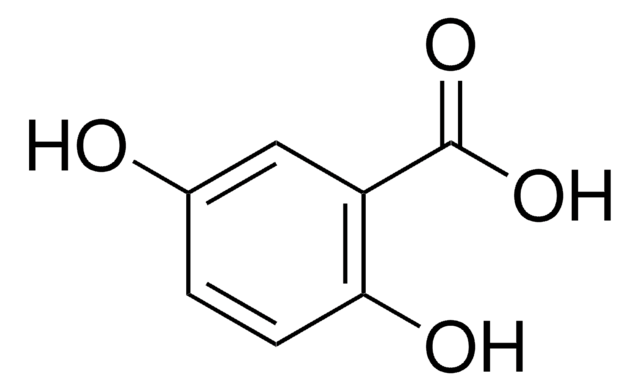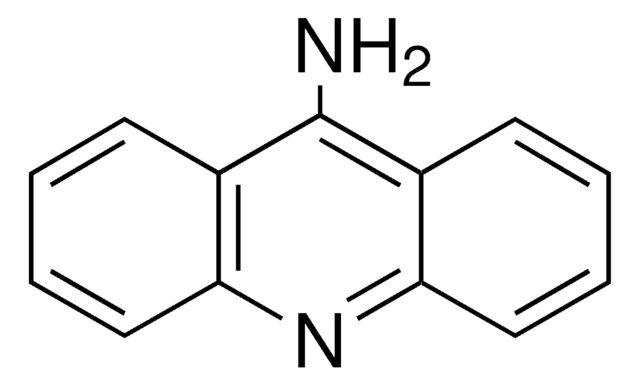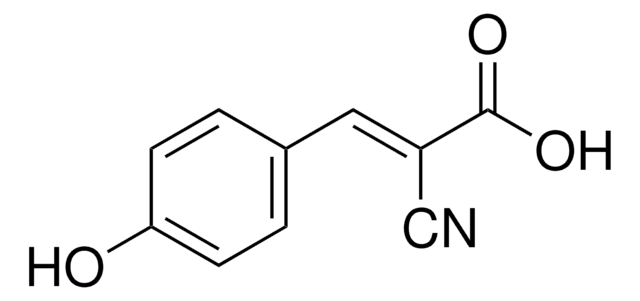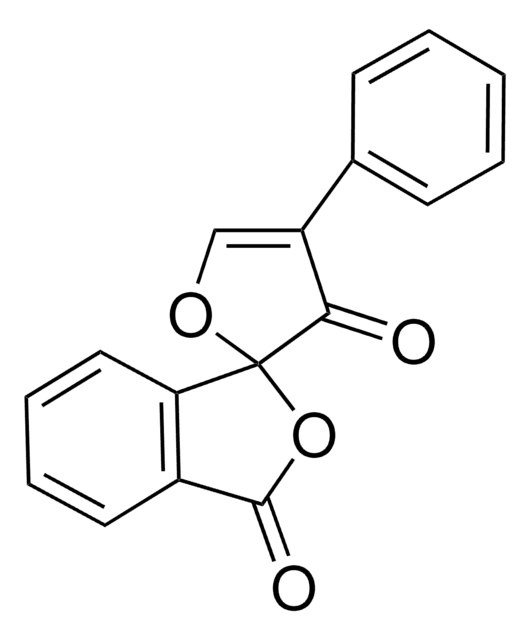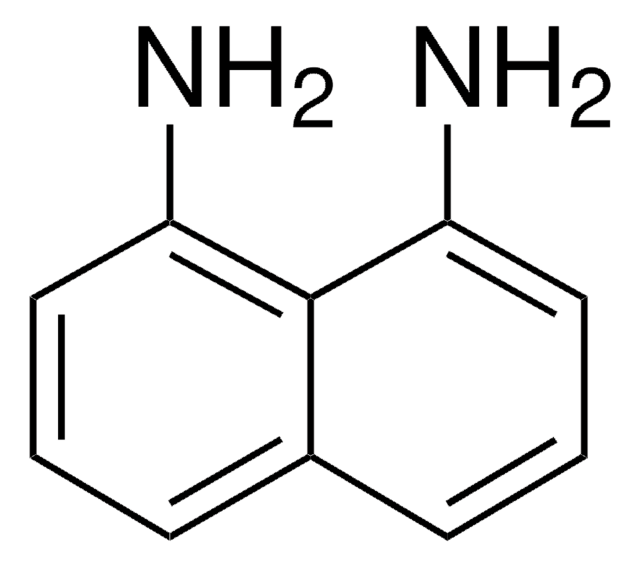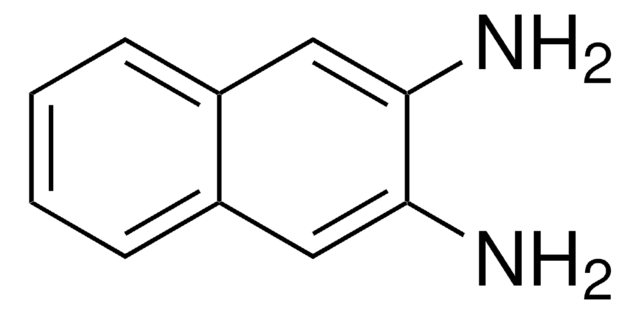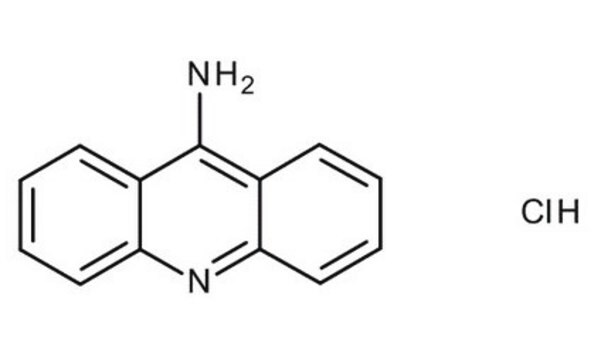56451
1,5-Diaminonaphthalene
matrix substance for MALDI-MS, ≥99.0% (HPLC)
Synonym(s):
1,5-DAN, 1,5-Naphthalenediamine, NSC 401110
About This Item
Recommended Products
grade
matrix substance for MALDI-MS
Quality Level
Assay
≥99.0% (HPLC)
composition
carbon content, 75.92% (theory)
hydrogen content, 6.37% (theory)
nitrogen content, 17.71% (theory)
analyte chemical class(es)
oligonucleotides, peptides
technique(s)
MALDI-MS: suitable
mp
185-187 °C (lit.)
cation traces
Ba: ≤5.0 mg/kg
Ca: ≤20 mg/kg
Cd: ≤5.0 mg/kg
Co: ≤5.0 mg/kg
Cr: ≤5.0 mg/kg
Cu: ≤5.0 mg/kg
K: ≤10 mg/kg
Mg: ≤5.0 mg/kg
Mn: ≤5.0 mg/kg
Na: ≤10 mg/kg
Ni: ≤5.0 mg/kg
Pb: ≤5.0 mg/kg
Zn: ≤5.0 mg/kg
SMILES string
Nc1cccc2c(N)cccc12
InChI
1S/C10H10N2/c11-9-5-1-3-7-8(9)4-2-6-10(7)12/h1-6H,11-12H2
InChI key
KQSABULTKYLFEV-UHFFFAOYSA-N
Looking for similar products? Visit Product Comparison Guide
General description
Application
Packaging
Analysis Note
related product
Signal Word
Warning
Hazard Statements
Precautionary Statements
Hazard Classifications
Acute Tox. 4 Oral - Aquatic Acute 1 - Aquatic Chronic 1 - Carc. 2 - Skin Sens. 1
Storage Class Code
11 - Combustible Solids
WGK
WGK 2
Flash Point(F)
438.8 °F - DIN 51758
Flash Point(C)
226 °C - DIN 51758
Choose from one of the most recent versions:
Already Own This Product?
Find documentation for the products that you have recently purchased in the Document Library.
Customers Also Viewed
Protocols
A short abstract on a method using QuEChERS and GC/MS/MS for determination of fipronil & fipronil sulfone.
Our team of scientists has experience in all areas of research including Life Science, Material Science, Chemical Synthesis, Chromatography, Analytical and many others.
Contact Technical Service
